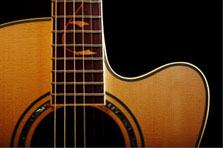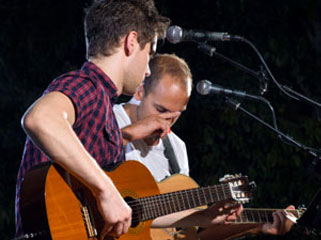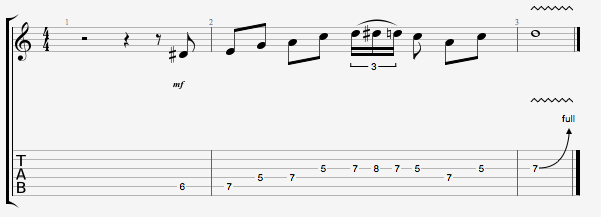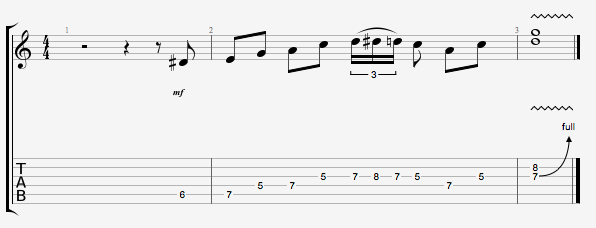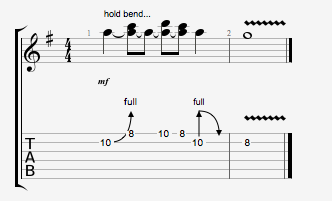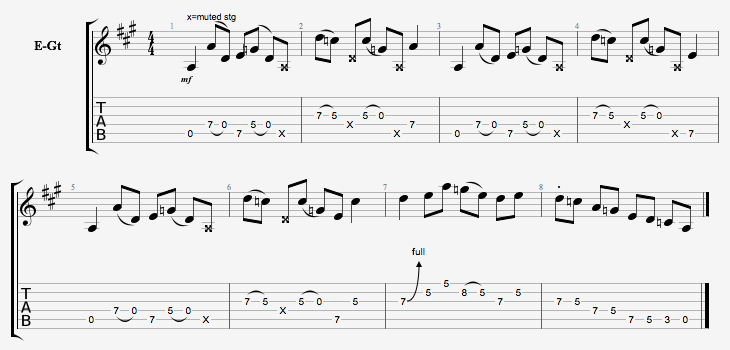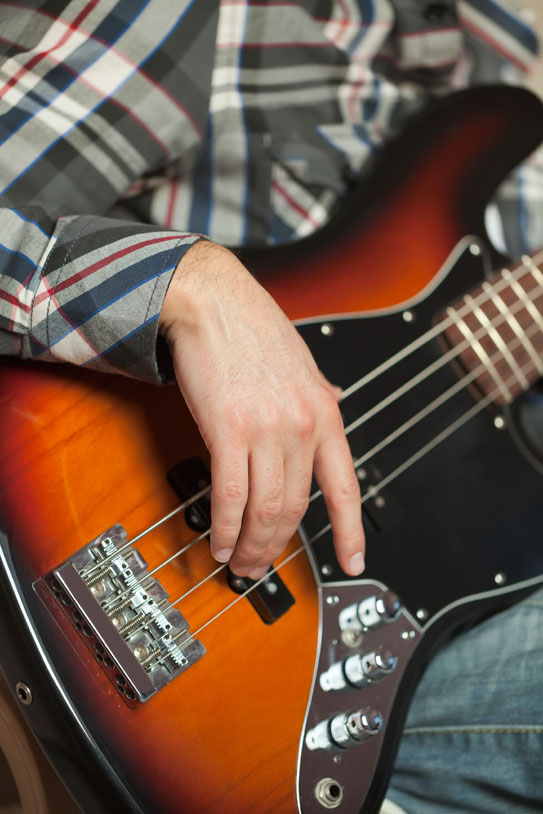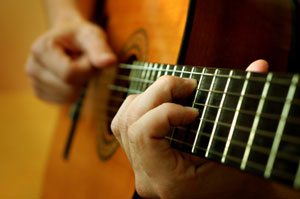
Blog
Dec 01 2015 |
Country Guitar Primer Pt. 2By: Scott Gilliam Posted in: Guitar Basics Welcome to the second installment of our country guitar lesson. The first lesson covered basic open pos chords, basic scale choices and some common country patterns to get you going. This time around, we will explore some more specific licks, and many of them will focus on bending. One of the great aspects of the guitar, in addition to being able to play more than one note at a time, is the ability to bend the strings. This gives the guitar it's "vocal" quality and in the world of country guitar, the design of bending is often to mimic a pedal steel guitar. I'm sure most of you have bent some notes before, as it is extremely common in blues guitar and of course rock guitar. The basic technique doesn't change, but the notes we will target may vary and the bending will become more intricate and require some new techniques. Ex.1 is a simple lick that features a whole step bend, it's played in the Key of C major, or, if you prefer A minor. The important concept here is the note we are targeting, E natural. This is the maj 3rd of the C chord and it has a "sweet" quality to it. I prefer to bend with my ring finger when possible, with the index and middle finger down behind it to reinforce the bend. This facilitates ease of bending, accuracy, as well as a controlled vibrato. An item of note here is the fact that I am playing this lick in the 5th pos A min pentatonic box. This means over a maj chord simply drop down a min 3rd (1 & 1/2 steps) and play the 1st pos min pent shape. It's the same notes as C maj pent, but most players are more familiar with the min shape, and certain licks fall under the fingers in a more comfortable manner here. Ex.2 is the same lick but this time we will replace the single stg bend with a double stop bend. This means that while we bend the 3rd stg up a whole step, we will hold down a stationary note (G) and strike both stgs at the same time. Now it's starting to get more of a country or southern rock vibe and the E & G notes played together imply a C maj triad. Ex.3 is a lick that introduces the concept of oblique bends. This means we will bend a single note and hold it, then strike another note allowing them to ring together. The bent note will then be released to resolve down and end the lick. This example is in the Key of G, the first bend targets the maj 3rd of the G chord (B) followed by a melody note of C & D. The lick then resolves to the root note G. The melody notes are played against the bent stg so bending up to pitch is very important so that the lick sounds in tune. This is what makes country bending so difficult, the bends represent chords so it's critical that we are accurate and in tune. Ex. 4 is another pedal steel influenced lick played in E maj pent. The bend up to G# is held through the whole first bar of the line, and we are alternating back and forth from the bent note on the 1st and 2nd stgs. This one ends with a bluesy lick in the 9th pos which resolves to an E maj triad in the 12th pos. Feel free to adjust the tempo on these licks. To my ears, they seem to sound better when played relatively fast. Of course, practice them slow and in time until they are under your fingers. Ex. 5 is our first "Chicken Pickin" lick! "Chicken Pickin" is a term for alternating fretted notes in a lick with a percussive, muted stg. This sounds similar to the sound a chicken makes, hence the term. To achieve this sound you want to pull the stgs hard so they slap against the frets for that nice snap. This example is the first 8 bars of Brad Paisley's tune "Cluster Pluck" from his album Play. I am playing the notes on the 5th stg with the pick, the notes on the 4th stg with my index finger, and the notes on the 3rd stg with my middle finger. This technique of pick and fingers is called hybrid picking. It's been great sharing these examples with you, and hopefully I've inspired you to check out some country pickers. The genre is vast and stylistically varied, so go back and start with the earliest creators of these sounds. Players like Chet Atkins, Clarence White, Gene Parsons, Merle Travis, etc... As with any genre of music, it's wise to check out who contemporary players were influenced by. You trace the lineage and history of the music and become a more rounded and better informed player, and it's also really fun! |
